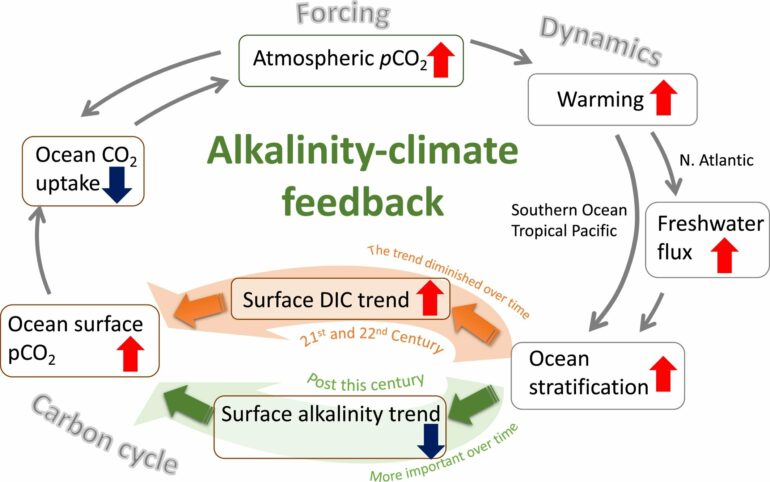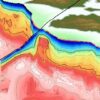Within minutes, a statistical model based on a global database of public reports of ground shaking can be used to identify an earthquake as a high- or low-impact event, according to a new study published in The Seismic Record.
High-impact earthquakes, as defined by the study, are those associated with at least one destroyed building, at least 50 damaged buildings, at least two deaths, or any documented financial losses.
The researchers were able to provide impact results for 393 global earthquake events from 2021 within 10 minutes. Their model was developed using more than 1.5 million globally collected felt reports from more than 10,000 earthquakes of any magnitude between 2014 and 2021. The reports come from the Euro-Mediterranean Seismological Center (EMSC)’s LastQuake app, which alerts populations and collects user reports of earthquake shaking in real time.
While their model still has some challenges separating some high versus low-impact events, the model was able to definitively label a large number of events as low-impact, according to University of Potsdam researcher Henning Lilienkamp and colleagues.
Quickly determining the impact of an earthquake is essential for decision-makers and emergency response operators, as they guide the immediate direction of the actions that can protect lives and mitigate further damage.
Of course, in some cases such as the February 2023 catastrophic sequence of earthquakes affecting parts of Turkey and Syria, “it is immediately clear that emergency measures are urgent,” Lilienkamp said.
Events like the magnitude 5.9 earthquake that hit remote areas of Afghanistan and Iran on 12 June 2022, causing over 1000 fatalities, “are where our model could be of interest, because, according to the EMSC, it was not clear for hours whether considerable impact was to be expected or not,” he added.
Rapid assessment impact systems such as the U.S. Geological Survey PAGER provide impact estimates within 30 minutes—although they can return results in as little as five minutes in heavily instrumented areas—using ground acceleration data and other seismic observations, along with crowdsourced reports.
While many kinds of data can go into assessing an earthquake in its immediate aftermath, EMSC “has built up a huge source of information that has barely been utilized in a quantitative way in seismic hazard and risk-related studies so far,” Lilienkamp explained. “We were convinced that this database is too valuable to be disregarded in the long run, because it is collected efficiently and on a global scale, including in regions that lack expensive seismic instrumentation.”
The goal of Lilienkamp and colleagues was to see whether a useful assessment could be developed quickly using only crowdsourced data. The basis of their method converts a felt report into a “pseudo-intensity” value that quantifies the level of shaking.
Being able to identify an earthquake as low impact could provide some comfort to the public, as these kinds of earthquakes can still be felt and may cause anxiety as a result, the researchers note in their paper.
Lilienkamp and colleagues suggest that their method could be used to develop a “traffic light” system based on impact scores, where green-level scores would require no further action by decision-makers, yellow would prompt further investigation, and red could raise an alert.
“As seismologists, we need to get a better understanding of how exactly decision-makers and emergency services like fire departments actually act in case of an emergency, which kind of information is useful, and at which probabilities of high impact they would prefer to raise an alarm,” said Lilienkamp. “Careful communication of our model’s abilities and the individual needs of potential end-users will be key for a practical implementation of traffic-light systems.”
For the 6 February sequence in Turkey, Lilienkamp said the LastQuake service collected about 6500 reports from the first magnitude 7.8 shock and about 4800 reports from the second magnitude 7.5 shock. “For the first shock it took about four and a half minutes to collect 50 reports—the number required to run our model—and after 10 minutes 1232 reports were available.”
As is usual, there was an initial lack of reports from the area where shaking was most intense. “This effect is well known and represents the fact that people under such extreme circumstances of course prioritize finding shelter and rescuing people in danger, over submitting felt reports on their smartphones,” Lilienkamp said.
More information:
Henning Lilienkamp et al, Utilization of Crowdsourced Felt Reports to Distinguish High-Impact from Low-Impact Earthquakes Globally within Minutes of an Event, The Seismic Record (2023). DOI: 10.1785/0320220039
Provided by
Seismological Society of America
Citation:
Crowdsourced reports can quickly identify an earthquake’s impact (2023, March 2)



